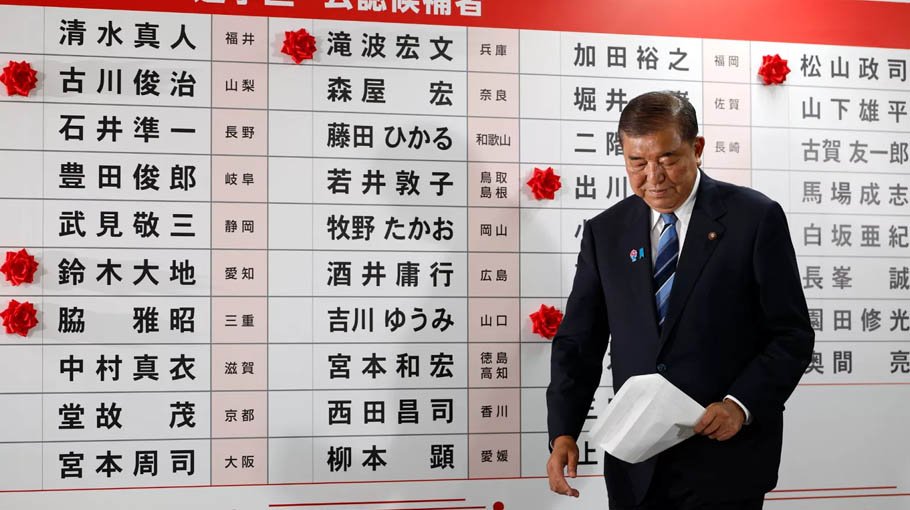Ishiba’s coalition loses majority in Japan’s upper house election

Japanese Prime Minister Shigeru Ishiba’s ruling coalition has lost its majority in the 248-seat upper house following Sunday’s crucial parliamentary election, deepening political instability in the country, according to NHK public television.
Ishiba’s Liberal Democratic Party (LDP) and its junior partner Komeito needed to secure 50 additional seats on top of their 75 to maintain control. With only one seat left to be declared, the coalition had managed just 47 — three seats short of the target.
The result marks the first time since its founding in 1955 that the LDP has failed to hold a majority in both houses of parliament, after already losing its grip on the lower house in October.
Despite the defeat, Ishiba pledged to remain in office, stating, “I will fulfill my responsibility as head of the No. 1 party and work for the country.” However, pressure is expected to mount from within his party either to step down or explore a new coalition arrangement.
The LDP, while still the largest party in parliament, won only 39 seats in this election — better than projected by exit polls but far from enough to retain control. Ishiba attributed the underperformance to the delayed impact of his administration’s measures to combat rising living costs. “It’s a tough situation. I take it humbly and sincerely,” he told NHK in a live interview.
Although the upper house does not have the power to initiate a no-confidence vote, the loss intensifies doubts over Ishiba’s political future and hinders the government’s legislative capabilities.
Economic Discontent Driving Voter Frustration
The election was heavily influenced by public discontent over economic issues. Voters voiced concerns about rising prices, stagnant wages, and increasing social security burdens. Stricter immigration policies also emerged as a contentious topic, fueling the rise of populist sentiments.
Adding to the pressure, U.S. President Donald Trump has criticized Japan’s stance in trade talks, particularly over the limited import of American cars and rice. A 25% tariff set to take effect on August 1 has further complicated Ishiba’s position. While the Prime Minister resisted making concessions before the election, prospects for progress remain uncertain under a weakened government.
Populist Surge Shakes Establishment Politics
As voter frustration mounted, populist and conservative parties made major gains. The right-wing populist party Sanseito, known for its hardline anti-foreigner and anti-globalist stance, surged from one to 14 seats. Meanwhile, the conservative Democratic Party for the People (DPP) quadrupled its presence, jumping from four to 17 seats.
DPP leader Yuichiro Tamaki said the result showed voters see his party “as a new alternative.” However, none of the opposition parties signaled any willingness to collaborate with Ishiba’s government. CDPJ leader Yoshihiko Noda emphasized the need for a united opposition, declaring: “Public opinion clearly said ‘no’ to the Ishiba government.”
Voter Divide: Stability vs. Change
The LDP’s near-continuous dominance in postwar Japan has long been a pillar of political stability. But this election exposed deep divisions in public opinion — with some seeking stability and unity, and others pushing for more inclusive and progressive reforms.
“I voted for candidates who won’t fuel division,” said 43-year-old Tokyo resident Yuko Tsuji, who supported the LDP. “If the ruling party doesn’t govern properly, the conservative base will drift toward extremes.”
Meanwhile, 57-year-old voter Daiichi Nasu called for a more diverse society, backing the CDPJ for its progressive stance on immigration and gender equality. “I want to see progress on those fronts,” he said.
The election’s outcome, shaped by voter frustration and a shifting political landscape, now leaves Japan’s government facing renewed challenges — both domestically and in its international relations.



